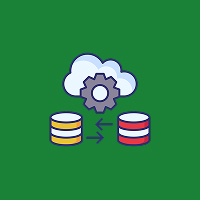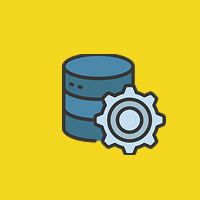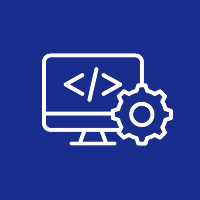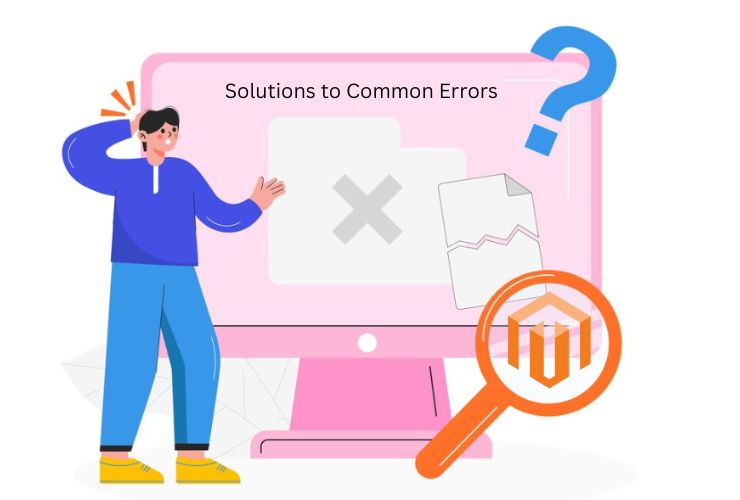Magento is one of the best-selling and strongest eCommerce platforms available in the market, which is very scalable, flexible, and feature-loaded. However, like any complex platform, Magento will toss its users all sorts of errors and issues, especially when installing or operating an online store. These errors could range from minor ones to fatal ones that may render the functionality of your store useless.
In this tutorial, we will introduce some common Magento errors that users may encounter and solution tips to fix them. Whether you are new to Magento or have years of experience, this tutorial will help you troubleshoot and resolve common issues quickly.
1. Magento 500 Internal Server Error
500 Internal Server Error is probably the most infuriating error in Magento since it normally does not offer much insight as to why the error is taking place. The problem can be caused by anything from problems with the.htaccess file, file permissions on the server, or PHP settings.
Solution:
- Check File Permissions: Make sure that your directories and files have the proper permissions (755 for directories and 644 for files).
- Review This .htaccess File: Maybe you’ve recently installed this .htaccess file and it may have been configured poorly. Attempt to restore it to default.
- Increase PHP Memory Limit: Sometimes this error occurs due to a memory shortage. Increase the PHP memory limit by editing your php.ini file or by adding ini_set(‘memory_limit’, ‘256M’); to your Magento root folder.
2. Magento Checkout Errors :
Checkout errors are one of the most important problems you can encounter in Magento. Checkout errors can happen during checkout and can make customers unable to complete their order, potentially resulting in lost sales.
Solution:
- Clear Cache: First, clear the Magento cache because stale cache files can create problems with checkout functionality.
- Check Payment Gateway Configuration: Confirm that your payment gateway integration is correctly configured. Ensure all credentials are correct and the API is responding as intended.
- Enable Error Reporting: Activate Magento’s error reporting to observe detailed error messages at checkout, which can help you diagnose the issue better.
3. Magento White Screen of Death (WSOD)
White Screen of Death (WSOD) in Magento occurs when the page fails to load, showing a white blank screen. This could be because of a variety of reasons like PHP errors, theme issues, or a corrupted database.
Solution:
- Check PHP Error Logs: Check the PHP error logs to determine the cause. Common issues could be memory limits, script timeouts, or module conflicts.
- Disable Custom Modules: Disable newly installed modules or themes and see if the problem is caused by them. Modules can be disabled from the command line using php bin/magento module:disable.
- Increase PHP Limits: Ensure your PHP limits are sufficient in terms of execution time and memory. Max out max_execution_time and memory_limit values in php.ini.
4. Magento Slow Performance
Magento performance can slow down over time because of a number of factors, such as poorly optimized queries, outdated settings, or unnecessary extensions in huge numbers. Page load slowness can spoil your user experience and search engine rankings.
Solution:
- Turn On Caching: Magento heavily depends upon caching to accelerate page loading. Ensure that all caching mechanisms available are turned on, such as Full Page Cache, Redis, and Varnish.
- Optimize Images: Large image files have a tremendous impact on slowing page load time. Use image compressors to lower file size without impacting quality.
- Use a Content Delivery Network (CDN): A CDN will be able to spread static content (images, CSS, JavaScript) across many different servers, so the user load time in other geographical areas is less.
5. Magento Indexing Errors
Magento utilizes the application of an indexing process for the optimization of your store’s performance. Indexing errors can make products, categories, and prices not appear correctly, or cause older information to be presented to customers.
Solution:
- Reindex the Data: You manually reindex your data using the following command:
php bin/magento indexer:reindex - Check Indexer Status: To look at the current status of your indexers, type:
php bin/magento indexer:status - Clear Cache: Sometimes reindexing data does not refresh the front-end automatically. Clear the cache once reindexed to ensure the changes have an effect.
6. Magento 404 Page Not Found Errors
The 404 Page Not Found problem occurs when a customer attempts to access a page or product that does not exist or is incorrectly linked. This may be caused by URLs being changed, products being deleted, or Magento’s URL rewrites not working properly.
Solution:
- Regenerate URL Rewrites: Regenerate the URL rewrites by accessing System > Index Management and reindexing the URL Rewrites index.
- Check for Broken Links: Use tools like Google Search Console to identify and fix broken links in your website.
- Clear Magento Cache: Clear cache so URL updates and rewrites are reflected in the front-end of the store.
7. Magento Admin Panel Login Issues
If you can’t log into the Magento admin panel, it could be due to wrong credentials, cookies, or permission.
Solution:
- Clear Cookies and Cache: Clear cache and cookies of your browser, as these may be causing problems with logging in.
- Reset Admin Password: In case you forgot your password, reset your password by running the following command:
- php bin/magento admin:user:change-password –username=admin –password=”newpassword”
- Check File Permissions: Verify whether the var and app directories have correct file permissions. These directories must be writeable by the server.
8. Magento Extension Conflicts
Magento extension conflicts will result in slow performance, damaged functionality, or admin panel errors.
Solution:
- Disable Conflict Extensions: Disable each of your recent installed or upgraded extensions to solve the conflict one by one. Disable a module using the below command:
- php bin/magento module:disable Vendor_ModuleName
- Check Extension Logs: Search for any admin panel errors or extension or core file conflicts within the extension’s logs.
Conclusion
Although Magento is a very powerful eCommerce platform, even it has faults. In order to ensure a smooth user experience and a successful online store, it is important to know how to debug typical Magento errors. Using the following solutions, you can resolve most of the most popular Magento errors, and your store will be in motion and optimized.
Regularity in maintenance, keeping your version of Magento up to date, and ensuring that extensions are the latest are the most crucial things that will make you avoid a majority of the mistakes in the first place. Equipped with the right information and tools, you’ll be able to keep your Magento shop in the best condition.
Contact Us Today













 Database Development
Database Development












































